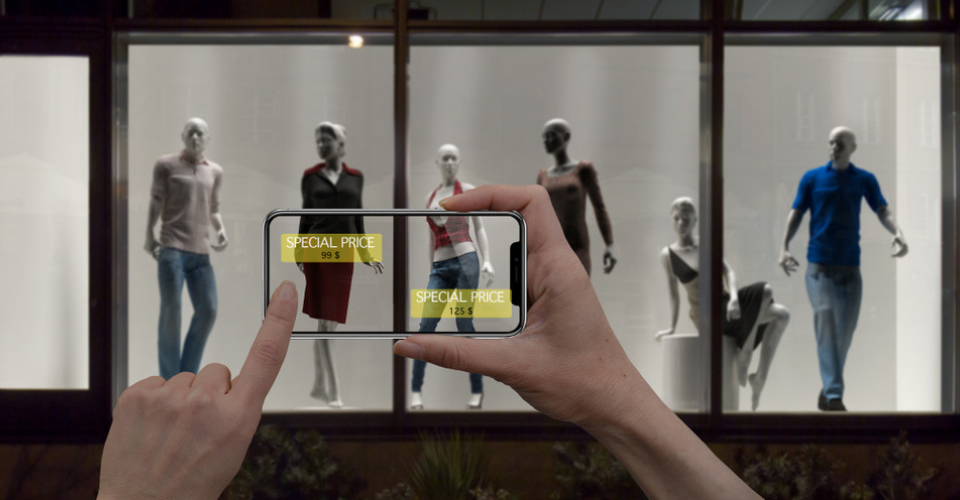Creating a compelling customer experience that feels like an engrossing activity rather than a chore is no easy feat, especially in today’s crowded consumer marketplace. Because of this fierce competition, the necessity for next-generation customer experiences is paramount. Brands are holding up a black mirror to our society as they look to identify newer, more appealing ways to communicate and connect with existing customers while attracting would-be buyers with interactive, technologically-fueled experiences that foster higher levels of engagement and loyalty. So, how are brands doing this? By playing god, so to speak, and augmenting reality for their customers.

Augmented reality (AR) is giving companies the power to create compulsory customer experiences by manipulating a person’s view of reality with computer-generated images. By crafting this modified vision of reality, AR is spearheading a revolution in terms of what it means to market and sell a product by making the whole process and experience much more interactive, tangible and life-like for customers. And this method is catching on like wildfire—the global market for AR products is set to surge by 80% to reach $165 billion by 2024, according to Global Market Insights.
The more easily an AR experience can be personalized to an individual customer—complete with customization capabilities—the more likely it will be successful and come to define and differentiate your brand. That’s according to a survey from PwC, which found that consumers are willing to pay extra for personalized, curated shopping experiences. With AR technologies rising in prominence and gaining such rabid fanfare from consumers, businesses would be foolish to not listen to the customer and give them experiences they crave. After all, the customer is always right. Below are three ways augmented reality can help make your customer experience more interactive, engaging and lifelike.
Appeal to the Senses
By toggling the delicate line between reality and fantasy, AR can plan an integral role in customer experience transformation, and help create journeys that influence customers’ visual, auditory, tactile and olfactory senses. Playing with what they see, hear, feel and smell, brands have a much more powerful, impactful way of connecting with customers that feels more lifelike to them. 19 Crimes wine is a perfect example of capitalizing on this connection between technology and human authenticity and empathy.
Through a smartphone app, consumers can scan bottles of 19 Crimes wine and hear the criminals on the label tell their stories. Appealing to their sense of sight and hearing while connecting with them on an emotional level, 19 Crimes’ use of AR makes them a standout in a crowded marketplace, creating a wine-buying experience that goes beyond just the actual product itself.
Turn Shopping into a Game
The most common, widespread example of augmented reality today that most people don’t realize is actually AR is the animated filters that have made apps like Snapchat so popular. Now, brands are starting to take this fun gamification and incorporate it into their product offerings and experiences. For example, the Sephora Visual Artist app lets users scan their face, try on a variety of different makeup or watch virtual tutorials on how to contour and apply makeup and then overlay that tutorial on one’s face to give them an idea of how they’d look.
Meanwhile, Memomi, a smart mirror company, allows customers to virtually try on clothing to enable them to visualize items and see how they fit without ever having to go inside of a dressing room. Already, 10% of consumers say they’ve used AR applications to do things like try on clothes or see how furniture might look in their homes. By turning shopping into an interactive game-like experience, rather than a rote scavenger hunt, brands are facilitating stronger relationships between customers by bringing them closer to their products. A customer experience like this is one that fosters greater trust and brand loyalty as well.
Mine Better Data and KPIs
Most of the above examples are strictly in the B2C realm, but augmented reality is also proving to be quite useful for B2B enterprises as well. For instance, AR can be a better tool than animation when it comes to visually representing to clients what KPIs a process transformation firm or agency will be measuring when taking over various business processes. It’s proving adept at removing the ambiguity and misconceptions that tend to plague this process and lead to uncertainty festering between B2B companies and their customers.

AR is also showing vast potential when it comes to data centers, being implemented to consolidate data from multiple project server monitoring metrics into the data center environment. What results is an increase in operational efficiency and customer service. Using AR to more comprehensively mine, analyze and leverage data, enterprises are able to create more personalized customers experiences that generate more sales. They can then employ AR to create 3D mock-ups of this data for a more holistic analysis of it that will govern and inform how to continuously evolve customer experiences to always match an individual’s desires.
Related Links:
- “Connected Customers Are Changing the Buying Experience”
- “Will 2018 Finally Be the Year Businesses Prioritize Customer Experience?”



